
Natalie Berry explores the growing indoor climbing wall industry and the opportunities and challenges that a boom in popularity presents...
'Plastic-pulling' has long been included in the climbing lexicon as a derogatory term for a branch of the sport that was widely deemed inferior. In recent years, however, plastic pulling has truly become a discipline in its own right – and a respected and popular one at that. Figures from the Association of British Climbing Walls (ABC) demonstrate that around 1 million people currently climb independently indoors in the UK, including about 100,000 regulars.* Of these, 59% are estimated to climb exclusively indoors. No longer can 'indoor climbing' be lumped with hillwalking and mountaineering in sports participation questionnaires, argue the ABC.
It's easy to assume that the prospect of climbing making its Olympic debut in Tokyo 2020 is the sole driver for increased numbers, but wider societal changes in attitudes towards sport and recreation – and ultimately climbing's perception – are playing an equally, if not more important, role. With major change comes opportunity, but also challenges and tension between old and new.
Walls have come a long way from the primitive yet pioneering early iterations, built as training facilities for the 'real thing' in winter and wet weather. The chipped braille trails traversed brick walls in sports halls, adorned with pebbles quite literally set in stone. Don Robinson's now famous Leeds University traverse wall was arguably a creation that laid the foundations for walls to come, popularised by the likes of John Syrett who transferred skills and fitness from brick to real rock. 'Between them,' writes Mick Ward, 'they created the impetus for a world-wide climbing wall industry. Between them, they changed climbing history.' Brick walls morphed into wood panels, while stone holds were swapped for resin alternatives. Structures grew taller to accommodate roped climbing, while the training benefits for visionary outdoor projects and the potential for organised competitions became increasingly clear.
Despite this, indoor climbing was long a niche discipline of our equally niche sport (or is it a hobby?), often eschewed by traditionalists for whom being in the outdoors and mitigating the associated risks is all part of its adventurous appeal. An indoor, sanitised experience bound by consent forms and safety regulations goes against the more traditional, wholesome image of climbing predicated on the outdoors and is ignorant, some might argue, to climbing and mountaineering's rich history. Unfortunately for the anti-indoor brigade, the current boom in indoor participation shows no signs of stopping. The number of wall visits and consequent turnover is up 16% on last year's figures and is expected to rise by a further 12% in the next 12 months.
'Indoor climbing doesn't need outdoor climbing to exist any more than swimming in your local pool needs the sea,' says Ged MacDomhnaill, Director of The Climbing Hangar bouldering chain. 'They are linked, they share important history and can complement one another, but they don't need one another.' However, the much-debated caveat of increased numbers at outdoor venues and associated environmental issues remains, if newcomers decide to take their climbing outdoors without appreciating the 'Climber's Code' of outdoor etiquette.
Considering the modern day focus on self-improvement and self-awareness in all its forms – mindfulness, yoga, the latest diet advice – between the daily grind, it's unsurprising that an engaging, comparatively cheap hobby might attract the health-conscious to a 'hip' activity with a wealth of social capital. In the Instagram age, climbing – even indoors – has value in the image that it portrays, albeit one hyperbolised by the mainstream media as an alternative, 'risky' adventure pursuit that stands out from just another day in the gym. In 2015, Bloomberg observed that in the USA, 'Indoor rock-climbing is a quietly expanding exercise industry ripe for a Crossfit-like explosion,' with many facilities posing as fitness-turned-lifestyle centres, coworking spaces or "hipster playgrounds," as the Washington Post christened them.
In some walls, staff are trained as baristas to the same high standards that you'd expect of their climbing wall management skills, with coffee machines to rival the best cafés and high-speed wifi somehow penetrating the chalkdust in the atmosphere. Pre-packed sandwiches and Mars bars have been swapped for panini and healthier snacks. Specialist events such as women's coaching courses, fun competitions and 'yoga for climbers' only add to the social scene and a participant's sense of wellbeing. Forget the dirtbags of rock climbing's yesteryear – a growing portion of indoor climbers have money and aren't afraid to spend it; blending personal fitness with coffee and remote working.
Ged considers this 'hipster' scene to be more complex; a mix of conformity and rebellion. 'I think the attraction to alternative fitness more broadly, not just climbing, represents a move away from the transactional nature of just doing exercise - I see it as an act of subtle resistance against the commodification of everyone being seen to do the right thing, i.e. eating healthy or going to the gym,' he explains. 'I think we provide a sort of sanctuary from the world of exercise and shaping yourself into something 'better.'''
The five new sports making their Olympic debut in Tokyo 2020 were selected for their youth appeal amongst other factors - something which indoor climbing undeniably boasts. Many climbing walls have incorporated children's play areas with climbing-related obstacles, and the rising popularity of Clip 'n' Climb facilities is engaging an even younger audience with fun, modular climbing structures. Even Rio Ferdinand has had a go. Mick Cooke, UK Director of Entre-Prises Climbing Walls and Clip'n Climb, gave an insight into this growing market. In the last financial year, sales were split 71% for Clip'n Climb and 29% for climbing walls. Mick puts the activity's success down to accessibility: 'It's bright, colourful and encourages people to come and have a go as they would do with a theme park. It's less intimidating than a climbing wall environment, but it's an experience that we hope will grow future climbers.'
400,000 under-18s are currently climbing under supervision. For a growing number of young indoor climbers – most of whom will hail from non-climbing or non-outdoorsy families – the indoor playground is all they know, and indeed all that many seem to want or need. 10 year-old competition climber Lily Kinnersley almost exclusively climbs indoors, and forays into the outdoors have been met with reticence. She seems proud of her choice to remain the proverbial – and slightly derogatory - 'gym rat.' But does Lily ever feel pressured by others to climb outdoors?
Her dad, Andrew, responds. 'I find climbers a bit contradictory. They don't always accept indoor climbers as fully fledged climbers because they only pull on plastic,' he explains. 'The "You don't know what you're missing!" comment comes up a lot. Then in the same breath they complain about how popular indoors has become and move on to how the outdoors needs protecting from all these masses of new indoor climbers. You can't win.' Andrew is quick to add that he feels some pressure to ensure Lily doesn't miss out, but for now is most at ease with her training indoors - especially if that's her own choice. 'Lily tends to find outdoor climbing too much of a faff,' he says. 'Getting there, setting things up. She could have ten climbs done in the time it takes to do one outdoors. Patience isn't her strong point and she finds it frustrating.' Perhaps as Lily matures she will discover outdoor climbing for herself, and Andrew will feel more at ease.
Equally, though, plenty of adults are joining the indoor party with no intention of swapping resin for rock. What's more, they don't aspire to make a lifestyle of climbing and form the basis for a new user group whose participation is predicated on pure fitness and socialising. The elements that enable many of us 'core climbers' to identify as climbers – travel, adventure, the outdoors – are absent in their experience of climbing. 'We are increasingly confident there is an unrecognised market out there amongst young indoor-only urban climbers,' says Graham Atkins of the ABC. Daniel Morrow, 27 from Edinburgh is a newcomer to bouldering and is enjoying both the social and fitness elements. 'I was looking for a fitness related activity a little different from the norm and bouldering provided it,' he explains. 'It's fun and social. People help you if you're struggling, offering advice where they can. Climbing is definitely just a recreational activity for me, something to compliment the weightlifting and occasional runs. It serves as something to break up the otherwise mundane schedule of run, gym... run, gym...'
Inevitably, as numbers increase, the demographic down the wall is changing, and increased visibility and accessibility is largely to thank for more diverse participation figures. No longer the sole preserve of the elite - as in mountaineering's early Victorian days - or of men with connections to other men who show them the ropes, climbing in general is rapidly opening up to people of all ages, genders, social classes and ethnicities. Women are now significant players in the indoor arena, occupying 29% of the gender split of regular, independent climbers. The proliferation of indoor bouldering - 78% of major UK walls are solely or predominantly boulder facilities - has likely played a major role in these developments.
Although cost of entry between boulder and lead facilities might differ by as little as 50p, the minimal kit and instruction required in bouldering increases its accessibility, while also being generally less intimidating for those scared of heights. 'I don't enjoy the hassle of the equipment for roped climbing,' a bouldering interviewee comments. Brian McAlinden, Manager of Harrowall in London, claims that bouldering walls are attractive to wall owners for a number of reasons. 'In the U.K. it's easier to find a building that fits a 4.5m wall than a 20m high wall,' he says. 'The cost of the wall build also makes a difference as lead walls are generally more expensive to build.' There's also the question of optimising space - a four line-wide 25m lead wall can take four customers, but flip it on its side and more people can be active simultaneously. All wall-owners interviewed cited the high cost of land for purpose-built facilities as a limiting factor for growth in the UK.
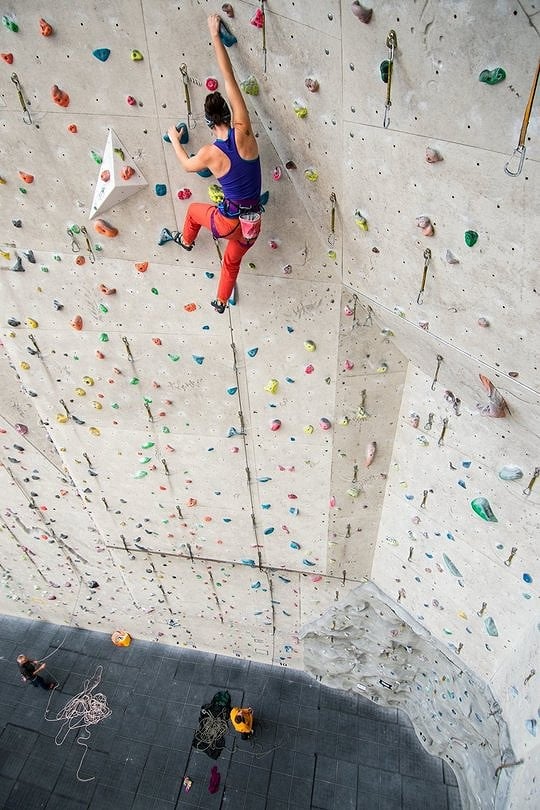
These elements combine to make bouldering a fun, comparatively cheap and logistically simpler option for both business owners and participants alike. 'I like the lack of faff, the ability to just turn up with a pair of shoes and probably know someone and socialise if I'm knackered!' another keen boulderer comments.
The social nature of bouldering can help foster a more inclusive environment, argues Paul Twomey, Director of The Climbing Academy chain. 'It was important to us that TCA could welcome people of any age, race, gender and social disposition,' he explains. 'For most of my early climbing career, indoor climbing was male-dominated and that machismo was very off-putting to many. It was a barrier to entry that we wanted to remove, to encourage participation rather than stifle it.' Paul aimed to open the door to a much broader user base through women's coaching, family inductions and inclusive sessions for disabled climbers. 'Slowly the predominant scene has shifted from people training for climbing, to those who find fitness or a social circle through climbing.' However, there remains a healthy appetite for climbing-specific conditioning areas, such as rings, stretching areas and system boards. 'Now people use a full range of facilities and walls are growing to include larger non-climbing areas, including social spaces,' Brian comments. No longer replacing or even replicating outdoor climbs, indoor walls are diversifying.
A topical concern in light of the British Mountaineering Council's AGM this month is the restructuring of our governing body, and the question of how its offices – housed in an old church in Manchester – can metaphorically become the 'broad church' that climbing in its myriad forms requires of it. It's an identity crisis of sorts. While clubs provided the foundation for BMC governance and membership in its halcyon days, now the focus has veered towards individuals, as clubs struggle to attract younger members due to alternative pathways into the sport – most crucially, via indoor walls in urban areas. In 2003, the split in BMC membership between clubs and individuals was roughly 30,000 on either side. Now there are approximately 59,000 individuals and the clubs are in stasis, at 26,000 members. It's plausible that climbing walls are becoming the new 'clubs' of sorts. A major benefit of this is increased accessibility to previously underrepresented demographics.
One charitable organisation working to empower at-risk youth in urban areas and diversify the sport is Urban Uprising. Director and Co-founder Stu Green recognises both the push and pull factors that underprivileged youngsters might face. 'Climbing enables kids to buy into a culture encompassing more than pure physical exercise – there's a perceived counter culture vibe to it,' he explains. One barrier to participation is poverty of opportunity, he explains. 'Young people with limited options don't see it as a choice. If none of their friends are climbing, then why would it occur to them as a potential activity?' Stu asks. 'I don't see climbing as inherently different to golf or other sports perceived as elitist. Climbing indoors has a relatively low entry cost, but if it's only carried out by the relatively wealthy few, then it doesn't pop on the radar for a diverse audience.' The only way that access will be increased for all is through concerted effort by walls, schools, charities, climbing councils and climbers themselves, Stu believes. 'Climbers are increasingly placing emphasis on being socially responsible and there's always great interest in our sessions at walls,' he says.
In mainland Europe, individual walls and the charity ClimbAID are bringing the benefits of indoor climbing to refugees, both in Europe and the Middle East, and simultaneously bringing people together. In the US, Brothers of Climbing was set up to bring visibility to a growing community of black and minority ethnic climbers. Founder Mikhail Martin explained the barriers that are slowly being broken down. His experience mirrors Stu's comments. 'The lack of minority groups is mostly due to lack of awareness, opportunity, and interest,' he says. 'People of colour walk by climbing gyms every day and they still don't know they exist. They may assume it's just a spot for kids' birthday parties.' Mikhail also highlights the importance of role models. 'Seeing someone like yourself do something can give you the validation that you're also capable of it,' he explains. Crucially, Mikhail points out that there are no major non-BME groups doing outreach to members of the BME community who are not "at-risk." 'There are people within the BME community who are physically, mentally, and financially capable, but nobody is trying to get them into climbing.'
Visibility is key, and just as indoor walls have entered new dimensions with geometric volumes making moves more 3D, climbing is entering new realms of popularity: climbing is in the Olympics, on the school curriculum through NICAS, on the TV and in home garages and attics. It's becoming ubiquitous. Corporate entities such as Red Bull have increased their appetite for alignment with climbing in recent years, not to mention Ashima Shiraishi's controversial partnership with Coca-Cola last year. Mainstream media interest in competition climbing has also grown, with regular news reports, interviews and social media clips doing the rounds. Add to this the current hype surrounding the TV show Ninja Warrior – in which many participants are climbers – and the appeal of climbing as an acrobatic, parcour-like activity becomes more obvious to a new audience.
Equally, climbing's appeal as an outdoor lifestyle sport makes it highly sellable. Images of scenic mountains, adventure tourism and travel are impressions which have clearly pointed advertisers towards climbing in a range of adverts recently - from Honda cars to Ralph Lauren aftershave and TRESemmé shampoo. Although it's predominantly the indoor elements turning heads in the media thanks to the Olympic buzz, it's difficult to keep the influence of both indoors and outdoors entirely distinct, especially for a mainstream audience for whom adventure is a more nebulous concept. Far-fetched as it sounds, images of indoor bouldering may evoke thoughts of Cliffhanger and Everest in some people. Interestingly, online engagement with climbing-related searches grew by 69% from January 2014 to January 2015 thanks to Dawn Wall mania, while searches related to climbing walls rose by over 200%, according to research by digital marketer Adam Stack. 'While we can't accurately say how many non-climbers became climbers,' Adam says, 'these data indicate that the Dawn Wall ascent had a major impact on the rapid growth of the climbing industry.'
Indoor climbing alone is a driving force for the climbing market as a whole: new indoor climbers buy equipment, clothing, entry passes, use climbing websites and perhaps join the BMC, which all feeds back into the industry. Duncan McCallum, director of the upcoming centre The Ledge in Inverness, considers the newly-coined 'urban climber' to be a woefully overlooked slice of the pie. 'There has been resistance, deliberate or not, from governing bodies to embrace the purely indoor climber as they were viewed as taking away from the ethos of the "true" sport and taking up resources, so they have been ignored by the power base in climbing,' he says.
But, to focus purely on the money is to forget one of climbing's biggest assets: its health benefits. A recent study by the University of Arizona suggests that bouldering could be an effective treatment for depression in adults. The physical, mental and social elements of bouldering successfully alleviated symptoms of depression and acted as a form of psychotherapy. In mainland Europe, climbing is gaining ground as an alternative form of therapy for both physical and psychological injuries and illnesses. The NHS has recognised its positive impact on mental health and physical well-being. However, compared to our continental neighbours, climbing therapy within clinical practice is in its infancy in the UK.
Overlooked by governments and health organisations in favour of football and other more popular activities, Duncan argues that it's time for change both within and outwith the climbing community. 'This is a huge opportunity for the world of climbing to embrace the new user and recognise that it can be a big tool in helping us raise a more active population,' he says. Demystifying the complexity of indoor climbing – misconceptions about safety and expensive, technical equipment – is key to making it more accessible and changing perceptions, Duncan explains. This concern is supported by a response from a new climber: 'I'd spoken to friends in the past about climbing, but it was never something I thought I'd enjoy, let alone be able to do.'
Ged remarks on a noticeable change in the Hangar scene. 'There are more people using climbing for exercise, but they're certainly not talking about it like it's exercise. They come for a new experience.' Bouldering feels less of a chore than going to the gym, perhaps. 'Could This Be Your New Workout?' the Huffpost asked last month. It promotes strength, balance and flexibility better than many other sports, argues Duncan. 'Forget the crag, just loose the flab!,' he jokes. 'It's a much-needed antidote for a modern society poisoned by depression and anxiety.' The lack of public uptake in traditional athletics and track and field post 2012 and the Commonwealth games is a problem for UK Sport and government sport funders, Duncan explains. Times are changing for climbing, however. 'Sports as understood by strategic funders are populated by a network of vested interests all invested in routes to medals,' he says. 'Climbing existed outwith traditional funding patterns until now, which suited the archaic views of governing bodies and clubs.'
In Japan, where indoor climbing is surging in popularity ahead of the 2020 Games, there are 600 climbing gyms nationwide; 100 of which are in Tokyo alone. In the UK, around 50% of walls report a new wall opening within 20 miles in the last 12 months. With 6 million visits per annum, the market is growing – but will it reach saturation point? 'The industry has to get bloody soon, there's just not a lot of space left,' says Ged. 'That's not to say we are even close to saturated, but if you are dated or others totally lift the bar you are in trouble. If you can't weather the dip in revenue while they grow the market for everyone, then expect tough times.' Traditionally marketed by word of mouth or by advertising in climbing-specific media, walls are now having to move with the times to capture new customers. 'With social media making it easier to communicate to current and potential customers, climbing gyms have become more savvy with their social feeds,' Brian comments.
In densely populated cities like London, where customer demand is higher and the market less saturated (compared to Sheffield or Manchester, for example), there are also tangible differences in how people use walls, likely influenced by the lack of nearby outdoor venues. 'VauxWest is open 0600-2300, to cater for city workers who prefer quick bursts at lunch or post-work gym fixes,' says Brian. Contrast this with a 'hybrid' indoor-outdoor climber in Sheffield who might choose between either a lengthy evening session at the wall or at the crag. So popular is the London scene that tally clickers are used at peak times and occasionally a 'one in, one out' policy is enforced.
Though increasing numbers are trying out indoor climbing, there's scope to convert more into regulars, Graham says. He outlined the key areas that the ABC is focusing on to promote and support indoor climbing: 'We are working on the development of a national competency card, supporting centres to implement technology and investment in industry-wide marketing and PR.' Echoing Duncan, a major frustration for Graham is the lack of overall investment in the sport relative to others. 'Historically this has been very low. This might come from government (Sport England, etc.), sponsorship, or through major investment in businesses,' he explains. 'This is coming, and I expect it to accelerate rapidly as the Olympics approach, bringing both benefits and risks.'
Direct marketing is something for the future, suggests Ged. 'Realistically we are a long way off this. It's expensive and very difficult to measure ROI, Google PPC advert campaigns can rack up some mega money and not convert and I think that's because we don't yet understand as an industry why people buy from us against the back drop of leisure more broadly,' he explains. 'I doubt people are ever really choosing between us and another wall, rather they are choosing between us, yoga, spin, boot camps and gym memberships.' Duncan aims to capitalise on this current fitness fixation to broaden appeal. 'Our marketing for The Ledge will talk about vertical fitness,' he says. 'We're not opening a climbing centre, but a gym.' With the Olympics edging closer, Paul considers this a key catalyst for marketing the sport. 'We will see an upsurge of media interest as the Olympics approach and this will market indoor climbing more effectively than we could ever do on our own,' he suggests.
75% of the UK indoor wall market is still boutique, which perhaps points to the importance of community and culture at the core of the sport. The possible tensions between retaining a core climbing membership and attracting a new customer base are obvious to wall owners. 'Walls are almost exclusively built and run by lifetime climbers, people whose lives have been devoted to climbing and who have generally come into business as a result of this,' says Paul. 'Genuine passion is appreciated by customers. Walls that do not have authority tend to be more akin to vertical gymnasiums, and definitely attract a different breed of user.' As for whether bouldering will continue to be the discipline of choice for owners and users, some business directors sense potential for market consolidation. 'In Bristol, the market grew from one lead wall, to two lead walls and two bouldering walls,' Paul explains. This challenged us in many ways, and yet also encouraged us to think tangentially, resulting in the purchase of Undercover Rock, a lead wall with a very different business model.' Indeed, the trend might well swing back to the rope as the Olympics approach.
Equally, the prospect of 'big money' coming in and mopping up the current boutique walls is a potential 'industry disrupter', as they say. Ged thinks this is a long way off. 'Most of us who own walls are still 'climbers' and a bit raggadag – our image needs to sharpen up before someone with a big cheque book comes along.' Homogenised facilities, he says, don't speak to the ethos of climbing. 'Look at skate and surf centres and parkour - what they want is there. A lifestyle, an identity, a place to feel connected and express themselves in, with 'attitude'. Big chains can never do this as the autonomy is lost lower down that us owners currently leverage. If we become 'safe' in terms of our identity as an industry, to be all things to all people for the biggest market, we will lose them.'
Will the indoor boom act as a sort of centrifugal force that will spill new climbers onto crags, or rather as a centripetal force that will draw people exclusively indoors? Of course, it'll never be so clear cut. Perhaps walls will take some responsibility for a potential increase in numbers and mitigate environmental issues through education. 'I feel that if you have a wall near any venues then you should be promoting and encouraging best practice,' says Paul. 'However, the BMC is the most effective organisation in this area.' Laying blame exclusively on indoor climbing is perhaps ignoring the bigger picture, Brian adds. 'The government increasingly views the great outdoors as a possible means of increasing health and reducing obesity, so they are equally pushing numbers outside,' he says. 'Indoor walls can help with education, but a huge percentage of our customers will not climb outside this year.' Indeed, 71% of independent climbers - those climbing without an instructor - who frequent the wall fewer than once every two weeks, are estimated to climb exclusively indoors, according to the ABC's research.
***
Indoor climbing has come a long way from the dingy corridors of yesteryear. Interestingly, the typically US term 'climbing gym' was frequently used by industry representatives - somewhat of a neologism in British climbing parlance and perhaps a sign that the shift towards all-encompassing fitness and lifestyle centres is already underway. It seems that indoor climbing is now 'ripe for a Crossfit-like explosion' in the UK as much as it was in the US in 2015. With a new urban market ripe for the picking, so to speak, we as a climbing community have a responsibility to ensure that our sport matures rather than turns rotten. Inclusivity, collaboration and education are key themes that stand out from this study for the future - working together to encourage participation, not stifle it, while upholding the ethics that help preserve the outdoor environment. Nobody wants our crags to become forbidden fruit.
From gritstone trad to alpine lines to the Olympic spotlight, being all things to all climbers is impossible, but climbing's polyvalence is part of its appeal for many. If it's true that climbers are becoming increasingly socially responsible, it seems that building walls really can be a counterintuitive way to break down barriers and improve wellbeing for all.
*Regulars are those defined as climbing once every two weeks (the Sport England definition of regular).
Follow the ABC on Twitter and Instagram.
- SKILLS: Top Tips for Learning to Sport Climb Outdoors 22 Apr
- INTERVIEW: Albert Ok - The Speed Climbing Coach with a Global Athlete Team 17 Apr
- SKILLS: Top 10 Tips for Making the Move from Indoor to Outdoor Bouldering 24 Jan
- ARTICLE: International Mountain Day 2023 - Mountains & Climate Science at COP28 11 Dec, 2023
- ARTICLE: Did Downclimbing Apes help Evolve our Ultra-Mobile Human Arms? 5 Dec, 2023
- ARTICLE: Dàna - Scotland's Wild Places: Scottish Climbing on the BBC 10 Nov, 2023
- INTERVIEW: Loki's Mischief: Leo Houlding on his Return to Mount Asgard 23 Oct, 2023
- INTERVIEW: BMC CEO Paul Davies on GB Climbing 24 Aug, 2023
- ARTICLE: Paris 2024 Olympic Games: Sport Climbing Qualification and Scoring Explainer 26 Jul, 2023
- INTERVIEW: Malcolm Bass on Life after Stroke 8 Jun, 2023



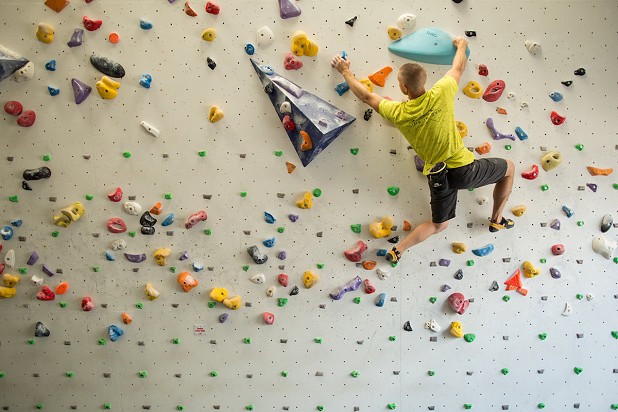
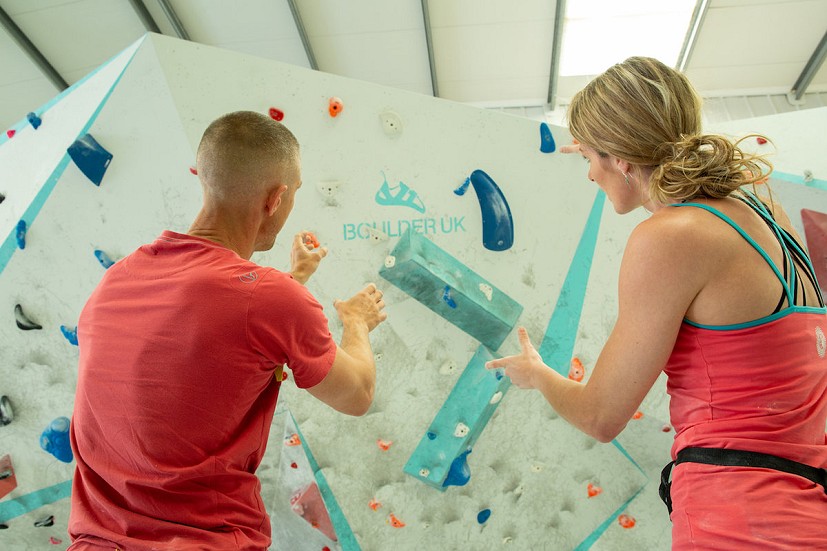
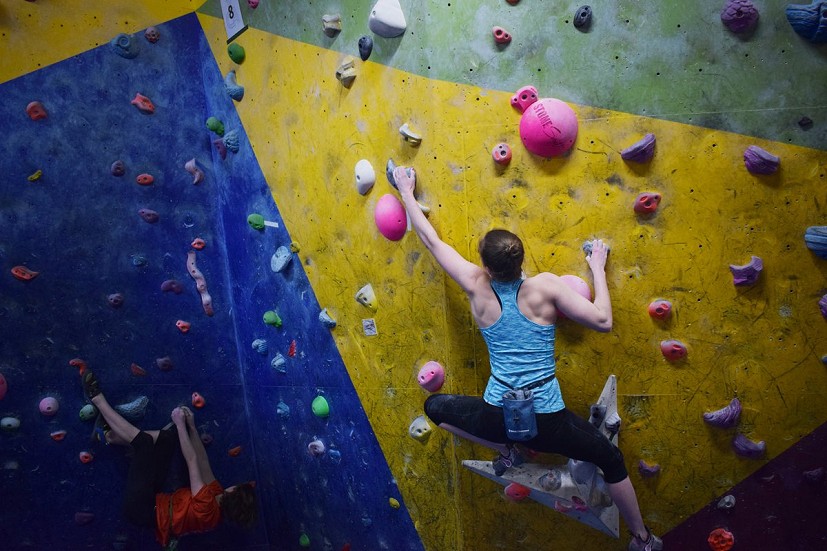
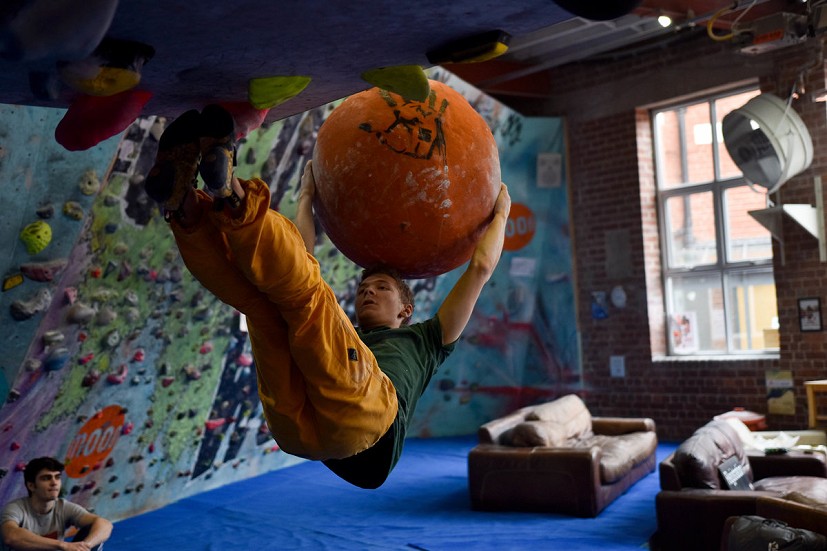



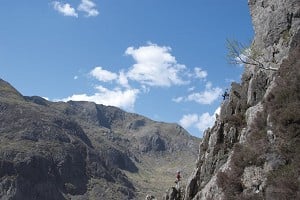





Comments
Long and thoughtful-looking article - I shall read later...
But the title, I loved. When I was young and obnoxious (as opposed to old and obnoxious) I used to get vast pleasure from conversations that went like:
"Are you climber?" in a tone of some interest
"Just a social climber"
Dead silence. End of any possible need to interact with a fellow human being.
"We are working on the development of a national competency card"
Interesting comment from the ABC guy. If they can pull it off well, it would be nice to get rid of that extra irritant in going to a new wall. Does anybody know roughly what proportion of walls are ABC members?
Mind you, if it requires me to carry an extra card around with me, it's unlikely to be much use.
Reading that makes me feel really old school, and when I was a kid just starting out in climbing at the local indoor wall I was considered one of the 'new' generation of wall bread climbers who'll be the downfall of the sport and that was 20 years ago. It's true though, walls are changing, big, steep lead walls are getting rarer, it's all bouldering now and most of the bouldering centres are all about cafe's and chill out areas etc, how much cake can we sell to the mums while the kids do an intro course and what not.
And all for perfectly reasonable business reasons of course. The problem is "real climbers" as in people who actually take the wider sport seriously, make for pretty crap customers. We only go when it's raining, probably have members rates, we'll bring our own snacks and bottle of water while demanding big expensive climbing surfaces to climb on with regularly changed high quality climbs on them and spend 4 hours on it. Compare that to a bunch of kids who'll pay more, probably spend the same again on food and snacks + their parents will have an overpriced coffee and they'll be happy with an hour session scrabbling about on any old bit of plywood with some bright coloured holds chucked on it.
It's already getting to the stage now where I and a lot of people I know rarely visit proper indoor walls now. If we can't get outdoors or it's wet we'll often just retreat to small private training boards because the big centres just don't offer enough for us anymore, we are just not the focus anymore. When we do go, it's normally just a milage session and within two sessions we've done everything we can climb or would want to climb and then that's it for six weeks until they re-set a suitably hard set.
Indoor climbing has fallen to the hip punters and kids parties and there is not a lot we can do about it.
I'm surrounded by walls owned by regular outdoor climbers and sensitive to the needs of all the climbers using them, be they mainly outdoor climbers visiting on rainy days or dedicated indoor folk or anything in between, all of whom seem to get on really well. You seem to me tt be making your own silo or maybe being very unlucky in where you live. Yes there are kids parties but that helps keep the entry prices down. The relative increase in bouldering facilities seem to me to have aided in this genuiniely mixed demographic having fun or trying hard to improve together.
^^ What Offwidth says, same in Sheffield, and the other walls I frequent like Eden Rock, Climbing Unit, Beacon, Boardroom etc. There’s a huge constituency who just see indoor/outdoor as climbing, and indoor as the necessary balanced part of building strength and skills for outside and don’t just use walls when it’s raining.
I think the article’s focus on indoor only climbers becomes more tangible the farther you get from crags, London, South East etc. It is not so relevant in Manchester, Liverpool, Sheffield, Leeds, Nottm, Newcastle
not sure about the demise of lead walls outside the badlands of the south east either. The lead walls in the cities listed above get absolutely rammed.